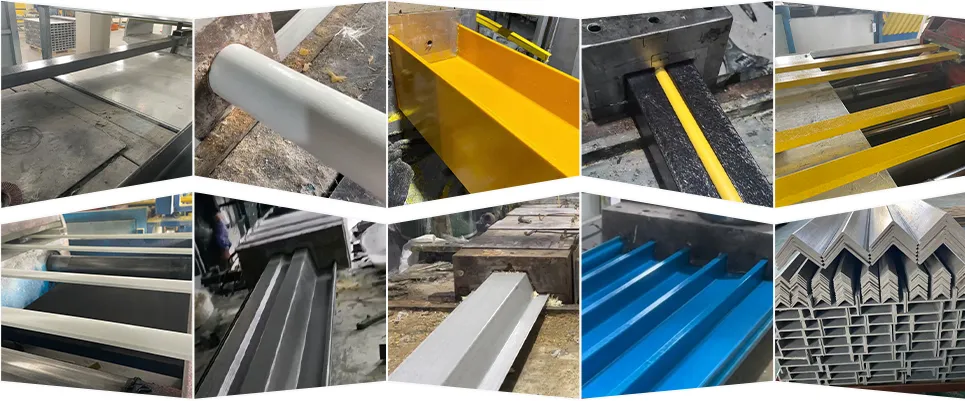loading...
- No. 9, Xingyuan South Street, Dongwaihuan Road, Zaoqiang County, Hengshui, Hebei, China
- admin@zjcomposites.com
- +86 15097380338
- Welcome to visit our website!
Exploring the Benefits and Applications of Fiberglass Reinforced Plastic Water Tanks in Modern Industries
The Role of FRP Water Tanks in Modern Water Storage Solutions
In recent years, the demand for efficient and durable water storage solutions has grown significantly, particularly in urban areas and industrial applications. One innovative solution that has gained popularity is the Fiber Reinforced Plastic (FRP) water tank. These tanks offer a range of advantages over traditional materials, making them an ideal choice for a variety of water storage needs.
Understanding FRP
Fiber Reinforced Plastic, commonly known as FRP, is a composite material made of a polymer matrix reinforced with fibers, such as glass or carbon. This unique combination of materials results in a lightweight, strong, and corrosion-resistant product. The process of manufacturing FRP involves layering the reinforcing fibers within a resin matrix, which is then cured to create a rigid structure. This design provides significant advantages in terms of both durability and performance.
Advantages of FRP Water Tanks
1. Corrosion Resistance One of the most significant benefits of FRP water tanks is their resistance to corrosion. Unlike traditional materials such as metal, which can rust and deteriorate over time, FRP does not corrode, ensuring a longer lifespan and reducing maintenance costs.
2. Lightweight and Easy to Install FRP tanks are significantly lighter than their concrete or steel counterparts, which facilitates easier transportation and installation. This lightweight nature allows for versatile placement options and can even reduce installation costs, as less heavy machinery is required for handling.
3. Customizable Designs FRP water tanks can be manufactured in various shapes and sizes, allowing for customization based on specific storage needs. Whether a large holding tank for agricultural use or smaller tanks for residential purposes, FRP can be tailored to meet precise requirements.
frp water tank

4. Thermal Insulation The insulating properties of FRP offer an additional layer of protection against temperature fluctuations. This is particularly useful for industries that require water at a consistent temperature, preventing heat loss and maintaining the quality of stored water.
5. Eco-Friendly Options Many FRP manufacturers are now adopting sustainable practices by using recycled materials in their tanks. This makes FRP a more environmentally friendly choice compared to traditional materials.
Applications of FRP Water Tanks
FRP water tanks have a broad range of applications across various sectors. In residential settings, they are ideal for storing potable water, rainwater harvesting, and agricultural applications. In industrial environments, FRP tanks are valuable for holding chemicals, wastewater, and other fluids due to their superior chemical resistance and durability.
Moreover, FRP tanks are increasingly used in fire protection systems, providing reliable storage for fire-fighting water reserves. Their corrosion-resistant properties ensure that the water remains uncontaminated, which is critical for effective fire response.
Conclusion
As the world increasingly focuses on sustainability and efficiency, FRP water tanks emerge as a superior alternative in water storage solutions. Their combination of lightweight construction, corrosion resistance, and customization options makes them an excellent choice for diverse applications. With the ongoing advancements in FRP technology, these tanks are poised to become a standard in modern water storage systems, meeting the needs of both industries and households alike. Investing in FRP water tanks is not just a practical decision; it's a step towards more sustainable and efficient water management strategies that address the challenges of the future.
-
Revolutionizing Industrial Safety with ZJ Composites' Mini Mesh GratingNewsNov.14,2025
-
Premium FRP Profiles and FRP Grating Revolution for Global WholesalersNewsNov.14,2025
-
Ultimate Strength with ZJ Composites FRP Profiles for Wholesale SuccessNewsNov.14,2025
-
ZJ Composites Covered Grating – The Durable Flooring Solution for Smarter Industrial SpacesNewsNov.14,2025
-
Mini Mesh Grating Enhancing Strength and Style in Every ProjectNewsNov.14,2025
-
FRP Pressure Vessels by ZJ CompositesNewsNov.14,2025
-
Transforming Industrial Spaces with Advanced Frp GratingNewsNov.11,2025
